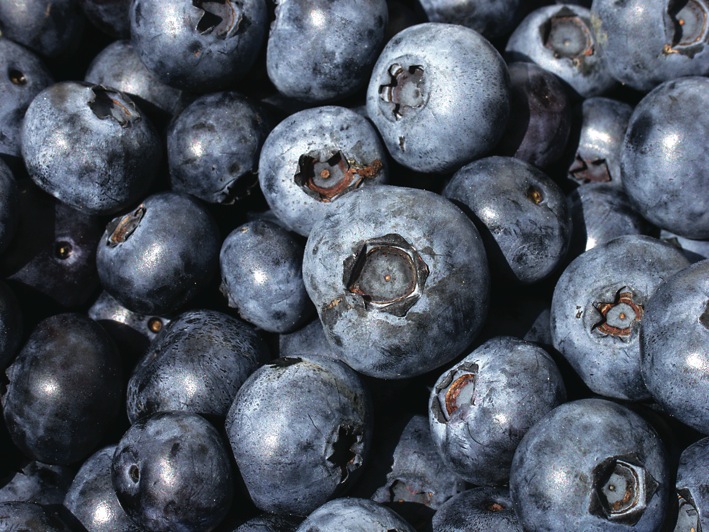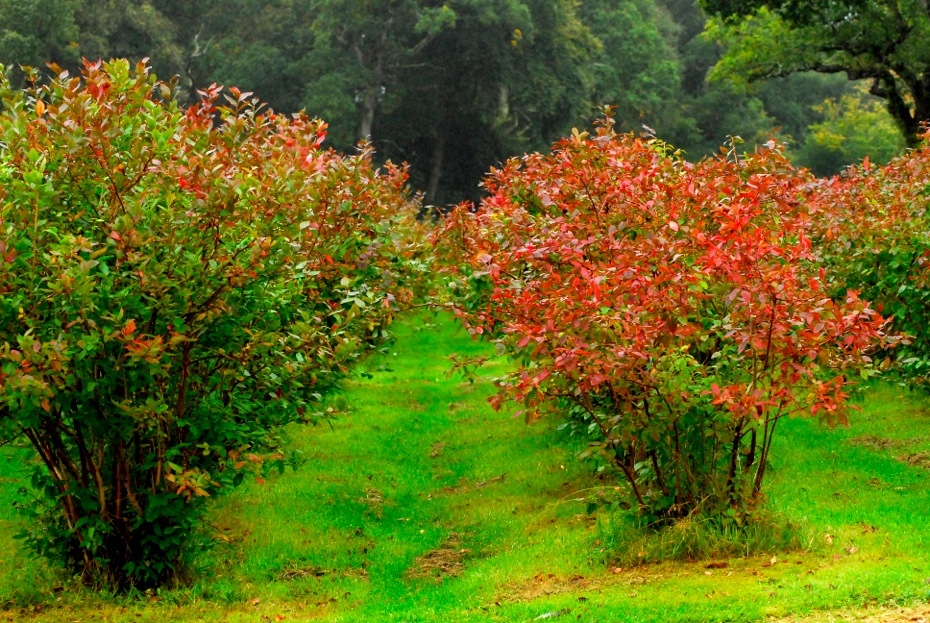
Whether you have a tiny garden, balcony or patio or a larger garden plot if you like eating blueberries you’d be mad not to grow them yourself. So in essence yes you can grow blueberries in your garden, regardless of the soil that you have.
These plants are just wonderful to grow, perfect for pots so you can take them with you if you move and they are really, really easy to grow.
But above all else picking your own fresh and ready to eat blueberries straight from your plant is a delight. They fruit over a fairly long season, I’m still picking blueberries from one of my plants now in late September and there are plenty more berries that are still yet to ripen.
When you have an established plant it will produce a decent crop, certainly enough for a batch or two of blueberry muffins, or a handful mixed with yoghurt or cereal for breakfast.
Bee food
But there’s more to the humble blueberry plant than meets the eye. Its drooping flowers are a vital food source for bumblebees in fact without the bumblebees there would be no blueberries. The two are totally interconnected. So much so that some of our native bumbles actually nest in the old vole and mouse holes that form around permanent plantings of these shrubby plants close to their food plant of choice. Don’t worry you are unlikely to have vole or mouseholes if you grow your blueberries in pots (or our garden) and it’s a well known fact that many bumblebees will make a nest in an abandoned mousehole, the perfect tenant in my mind.
And there is even a Bilberry Bumblebee, bilberry being another common term for the blueberry, although they are closely related they aren’t exactly the same. The bilberry bumblebee, is quite rare and in Britain and occurs in more upland terrain, on elevated moors and mountains, hence it’s other common name the Mountain Bumblebee (Bombus monticola). When found the bilberry bumble is often feeding on or near bilberries, cranberries and cow berries, all members of the acid loving Vaccinium family that grow in nutrient poor, acidic terrain.
Acid loving
Which brings us to some of the needs of the blueberry plant itself. First of all it’s a native of Britain and Europe which means it is perfectly well adapted to our climate (forget about climate change for once – though don’t think it’s not important for a moment). And because it thrives in acidic soil it is what is called Ericaceous and needs to be grown in suitable, ericaceous compost or in non-calcareous soil. Hence why it is a great plant to grow in pots and containers because you can buy exactly the right compost to suit its needs.
This is exactly what I do, because I live on a limey alkaline plateau with the corresponding alkaline soil. Grow them in a loam based ericaceous compost, add a thick layer of crocks to the bottom and ensure the plants have good drainage, they grow naturally in boggy ground, they don’t like to be waterlogged but they do need lots of water.
Guilty pleasure

But I have several large pots of blueberries of different varieties all establishing around the patio. The best one, a gift from a friend, has sadly lost its label, but is still producing fat blue berries as I type and I have to confess to secretly lifting the pop up netting tent that stops the birds reaching most of the harvest, and eating them myself when no one is looking. Picked like sweets fresh off the plant they are juicy and tasty and a real delight. Plus they are rich in antioxidants, vital as we approach the virus laden months of winter.
But the final thing that I love about my blueberries is that they have fantastic autumn colour before their leaves fall. Fiery red and orange hues are not uncommon and give these fabulous garden plants an additional season before winter.
All images © Martin Mulchinock


